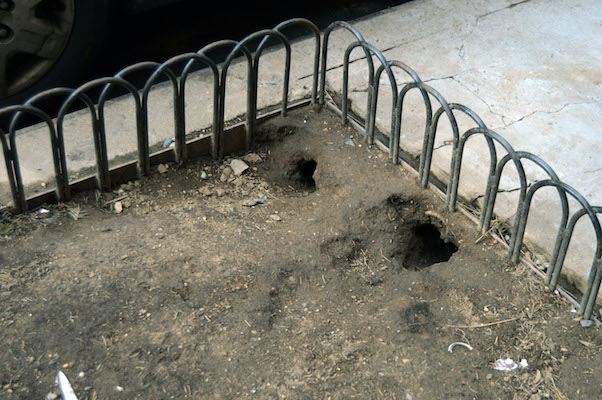
BY JACKSON CHEN | The city’s Department of Health and Mental Hygiene has released results of a rat population survey on the Upper East Side, detailing just how widespread the rodent infestation is throughout the area.
According to a “Rat Indexing” map the department presented during a Community Board 8 meeting on January 31, there were 250 properties with signs of rat activity out of the 1,389 sites inspected in the Rat Reservoir program. The program is the department’s efforts to reduce rat activity in certain hot pockets throughout Manhattan and the Bronx, and evidence of such activity is characterized as a “failure.”
After a surge in complaints related to the construction of the Second Avenue Subway, the health department completed the neighborhood’s indexing in November 2016. For the Upper East Side, the borders of its Rat Reservoir program stretched from roughly East 80th to 100th Streets and from Park to York Avenues, with a small chunk of blocks from East 80th to 84th Streets from York to East End Avenue also surveyed.
Properties highlighted in red were those found with rat activity, and those marked in dark red had an even higher severity rate of rat presence, according to Caroline Bragdon, the health department’s director of neighborhood interventions.
Bragdon said the indexed area’s failure rate is just above 18 percent and her department’s goal is to reduce it to below five percent.
The Upper East Side is home to many restaurants, parks, and old infrastructure combined with ongoing new construction projects – all factors that contribute to conditions where rats can thrive. The most decisive risk factor for a neighborhood, Bragdon said, is the amount of garbage it produces, especially when not disposed of quickly and cleanly.
According to accounts by local residents, the area near the corner of East 88th Street and First Avenue is home to many rats digging through improperly disposed trash.
Matthew Duemesi, who lives near that corner, said rats are a constant presence and can frequently be seen during nighttime hours.
“When I’m looking out my window at 2 in the morning, they’re on the streets, they’re on the curb, they’re fighting each other,” Duemesi said. “It’s a circus.”
According to the Upper East Side resident of 17 years, there are obvious signs of rat activity, with droppings across the street near an alleyway and large burrows in the tree pits nearby. Duemesi said he believed the rats flourish due to a combination of trash bags being left out too long and recent construction at First Avenue between East 86th and 87th Streets.
The health department’s Rat Index identified a particularly severe stretch of infestation in the area between East 90th and 92nd Streets from Second to Third Avenue, which are denoted on the map in dark red.

The area’s neighborhood association, however, noted that the problem is far-reaching across the entire CB8 district.
“They’re overrunning the city,” Elaine Walsh, the president of the East 86th Street Neighborhood Association, said of the rats. “They’re here all the time. They’re just present every day in our lives.”
Walsh appreciates the department’s efforts, but said an equal amount of attention – in terms of sanitation enforcement and extermination efforts – should be paid to the entire CB8 district instead of focusing solely on the trouble spots identified by the Rat Indexing boundaries.
“It has to cover all the blocks from Park [Avenue] to the river, then all the side streets,” Walsh said. “What’s going to happen is when you treat those areas, you basically displace those rats.”
The health department specifically targets the areas indicated in red on its map, but it also encourages all residents to engage its case managers when they visit to do inspections. The agency does outreach to residents and building owners through the community boards, neighborhood organizations, and elected officials to explain best practices to combat rat populations.
Bragdon emphasized the importance of building managers putting out their garbage as close to the time when trucks pick up as possible so trash bags don’t linger on the streets. Trash should be placed in sturdy containers or rat-resistant bags that rodents won’t gnaw through, she said.
Regarding trash cans the city places on corners, Bragdon suggested local residents try to find a sponsor to purchase a Bigbelly solar-powered trash compactor — which runs about $3,000 a unit. That product is considered the gold standard to replace the typical mesh trash baskets the city provides.
Bragdon emphasized the health department’s commitment to continue working with residents and the community board to schedule additional neighborhood walkthroughs and solicit feedback for its next round of indexing.

















